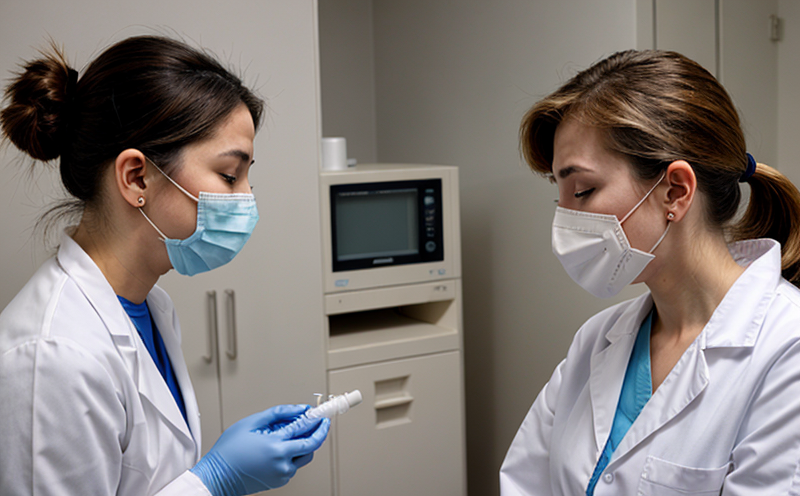Immunotoxicity Testing in Rodent Models
In the realm of clinical and healthcare testing, particularly within Allergy & Immunology Testing, immunotoxicity testing is a crucial component. This service ensures that drugs, chemicals, and other agents do not adversely affect the immune system, thereby ensuring patient safety during drug development or exposure.
Immunotoxicity testing in rodent models involves evaluating the potential impact of various substances on the immune function using laboratory rodents such as mice and rats. These models are widely used due to their genetic similarity to humans and their manageable size for experimental manipulation. The primary goal is to identify any harmful effects that might compromise the host's immunity, leading to a higher risk of infections or other immunological disorders.
The rodent models provide a reliable platform for assessing systemic toxicity, particularly focusing on the immune system. This testing helps in understanding how different compounds interact with immune cells and pathways, which is critical for regulatory compliance and ensuring drug efficacy. The use of these models allows researchers to identify early signs of immunotoxicity and mitigate potential risks.
For instance, this type of testing is essential when developing vaccines or evaluating new biologics that could potentially impact the host's immune response. It also plays a vital role in the safety assessment of environmental pollutants or industrial chemicals that might be ingested through water or food chains.
The testing protocol typically involves several stages to ensure comprehensive evaluation:
- Preclinical assessments: Initial evaluations to understand baseline immune function.
- Acute exposure studies: Testing the immediate effects of a substance on the immune system after short-term exposure.
- Chronic exposure studies: Evaluating long-term effects after prolonged or repeated exposure.
- Endpoint analyses: Specific measurements that indicate changes in immune parameters such as cytokine levels, cell proliferation, and antibody production.
This approach ensures a thorough understanding of the potential immunotoxicity associated with various agents. By employing these rigorous methodologies, laboratories can provide reliable data to support regulatory submissions and clinical trial applications.
| Stage | Description |
|---|---|
| Preclinical Assessments | Evaluating baseline immune function to set a reference point for comparison. |
| Acute Exposure Studies | Testing immediate effects after short-term exposure. |
| Chronic Exposure Studies | Evaluating long-term effects after prolonged or repeated exposure. |
| Endpoint Analyses | Specific measurements indicating changes in immune parameters such as cytokine levels, cell proliferation, and antibody production. |
The results of these tests are critical for ensuring that any new drug or chemical does not compromise the patient's health. Regulatory bodies like the FDA, EMA, and others often require such data before approving a substance for clinical use. This testing ensures that any potential risks are identified early in the development process, allowing for informed decision-making.
Scope and Methodology
The scope of immunotoxicity testing in rodent models covers several key areas:
- Evaluation of systemic toxicity on immune function.
- Detection of adverse effects on specific immune parameters such as cytokine levels, cell proliferation, and antibody production.
- Assessment of the potential for hypersensitivity reactions or other allergic responses.
- Identification of any immunosuppressive or hyperimmunogenic effects that could impact therapeutic efficacy.
The methodology involves a series of detailed tests:
- Pathological evaluation: Examination of organ histopathology to identify structural changes.
- Biochemical analysis: Measurement of enzymes, proteins, and other biochemical markers related to immune function.
- Cytometric analyses: Use of flow cytometry to assess cell populations and viability.
- Phenotypic assessments: Analysis of gene expression patterns that indicate immune activation or suppression.
The testing is conducted in compliance with international standards such as ISO, ASTM, EN, IEC, and others. These standards provide a framework for consistent and reliable results across different laboratories. The use of standardized protocols ensures that the data generated can be validated and used in regulatory submissions.
Benefits
The benefits of immunotoxicity testing in rodent models are numerous:
- Enhanced Safety Profile: Ensures that new drugs or chemicals do not compromise the patient's immune system, reducing the risk of adverse reactions.
- Regulatory Compliance: Meets the stringent requirements of regulatory bodies like the FDA, EMA, and others.
- Informed Decision-Making: Provides critical data for informed clinical trial design and drug development strategies.
- Economic Efficiency: Identifies potential issues early in the development process, reducing costs associated with post-market recalls or adverse event reports.
- Patient Safety: Ensures that products are safe for use in humans by identifying any harmful effects on immune function.
- Improved Therapeutic Efficacy: Helps in optimizing drug formulations and delivery systems to enhance therapeutic outcomes without compromising immune health.
The comprehensive nature of this testing ensures a robust safety profile, which is essential for the development of new pharmaceuticals and biologics. By identifying potential risks early, laboratories can provide data that supports regulatory approval and ensures patient safety.
Competitive Advantage and Market Impact
The competitive advantage of providing immunotoxicity testing in rodent models lies in the ability to offer a comprehensive service that meets both domestic and international standards. This includes:
- Accurate and reliable data generation that aligns with global regulatory requirements.
- Dedicated expertise in handling complex biological samples and interpreting results accurately.
- State-of-the-art laboratory facilities equipped with advanced instrumentation for precise analyses.
- Strong partnerships with leading pharmaceutical companies to ensure continuous improvement and innovation.
The market impact of this service is significant:
- Promotes the development of safer drugs and chemicals, enhancing public health.
- Supports compliance with international standards, ensuring global acceptance of products.
- Fosters a culture of safety in drug development, reducing risks associated with immunological disorders.
The service is particularly valuable for pharmaceutical companies, biotech firms, and research institutions that are developing new therapeutic agents. By providing robust data on potential immunotoxic effects, it helps these organizations make informed decisions about their product pipelines, ultimately leading to safer and more effective treatments.





